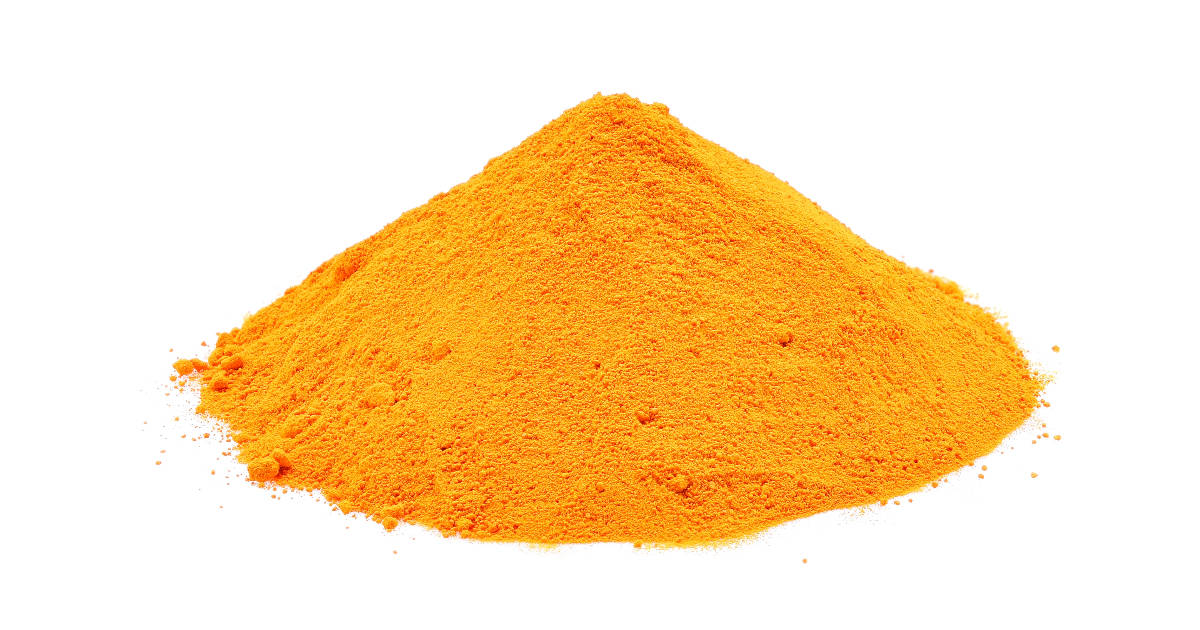Saffron is one of the world's most expensive spices, prized for its distinctive taste, aroma and vibrant golden color.

However, its high cost often leads home cooks and chefs to seek saffron powder substitutes that can approximate its flavor profile and coloring properties at a more budget-friendly price point.
Top Saffron Powder Substitutes
Turmeric Powder
Turmeric powder is one of the most readily available and frequently used substitutes for saffron powder. It provides a vivid golden yellow color extremely similar to saffron.
While the flavors differ, with turmeric being more earthy and gingery, it can approximate saffron's essence in some dishes better than other alternatives. Turmeric also has the benefit of being very inexpensive and easy to find.
To substitute, use 1/4 to 1/2 teaspoon of turmeric powder in place of 1 teaspoon of saffron powder, adjusting to taste and color as needed. Turmeric works well in rice dishes, curries, soups and more.
Annatto Powder
Annatto powder is another excellent choice for duplicating saffron powder's signature golden hue. It is made from the seeds of the achiote tree and has been used for centuries as a natural food coloring.
In addition to its vibrant yellow-orange color, annatto powder provides subtle flavor notes of pepper and nutmeg. It can be found in the spice aisle at many grocery stores.
Use annatto powder in a 1:1 ratio in place of saffron powder, adjusting the amount to achieve your desired color strength. It's great for rice, sauces, stews and Latin American dishes.
Sweet Paprika Powder
Sweet paprika powder made from ground dried red peppers can also stand in for saffron powder when you need both color and flavor. It provides a beautiful deep orange-red color and a mild, sweet taste.
Paprika will not give the identical golden tone of saffron, but it can impart a similar sense of warmth and add subtle smokiness. Use about 1/2 teaspoon of sweet paprika powder per 1 teaspoon saffron powder called for.
It's ideal for seasoning meats, stews, rice and more. Sprinkle it over finished dishes as a garnish too.
Ground Cumin
Warm and earthy ground cumin makes for an affordable, flavorful saffron powder substitute in many savory dishes. Its soft yellow color is not as vibrant as saffron, but it can provide a similar essence in small amounts.
Cumin has strong, bitter notes, so use sparingly, starting with just 1/4 teaspoon in place of 1 teaspoon saffron powder. A pinch of sugar can help mellow cumin's bitterness.
It's excellent in curries, lentils, beans, grains and meat dishes when you want flavor over color.
Safflower Powder
Safflower powder made from the dried petals of safflower plants can approximate both the color and gentle flavor of saffron powder. Sometimes called "false saffron," safflower has an aromatic, honey-like taste.
To use, substitute safflower powder in a 1:1 ratio for saffron powder. While not an exact match, it makes an excellent stand-in for pricey saffron powder in terms of taste, color and affordability.
Curry Powder
Most curry powder blends contain turmeric, so they can provide a similar golden tone to foods as saffron powder. Curry powder also supplies an assortment of aromatic spices like coriander, cumin and fenugreek for flavor.
However, the taste of curry powder is more robust than saffron powder. Start by using about 1/4 to 1/2 teaspoon of curry powder per 1 teaspoon of saffron powder called for. Adjust amounts to suit your preference.
Marigold Petals
The orange and yellow flower petals of marigolds contain carotenoids that can act as natural food dyes. When dried and ground into a powder, marigold petals can tint foods a bright golden yellow similar to saffron.
Flavor-wise, marigold petals have a pungent, bitter taste. Use minimal amounts - 1/8 teaspoon or less per 1 teaspoon saffron powder - for color over flavor. Or combine with other spices for more complex taste.
Tips for Cooking with Saffron Substitutes
- Start with small amounts of any substitute and adjust upward based on color and flavor.
- Bloom spice powders like turmeric or annatto in hot water or broth before adding to food for more vibrant color.
- Combine spices like paprika and cumin to achieve more complexity.
- Toast alternative spices briefly to intensify their flavors.
- Allow longer cooking times for powders to fully infuse dishes with their color and essence.
- Use marigold, annatto or food coloring sparingly for color alone.
- Add a pinch of sugar or honey to balance bitter notes of some substitutes.
Common Saffron Powder Substitute Questions
What is the best substitute for saffron powder in rice?
For rice dishes that rely on saffron's iconic golden hue, turmeric powder makes the best replacement. It can easily approximate both the color and subtle earthy flavor. Use in paella, biryani and risotto.
What can be used instead of saffron powder in baking?
For baked goods, mild annatto powder adds vibrant color and little flavor interference. Start with 1/4 teaspoon per 1 teaspoon saffron powder and add more color if needed.
How much turmeric equals saffron?
A good rule of thumb is 1/4 teaspoon of turmeric to equal 1 teaspoon of saffron powder. Turmeric has more concentrated color, so you typically need less to achieve a similar hue. Adjust amounts as needed.
Can I use curry instead of saffron?
Yes, curry powder containing turmeric can replace saffron powder in some dishes, starting with about 1/4 teaspoon per 1 teaspoon saffron. However, curry has a much stronger taste, so use sparingly and adjust amounts to suit your recipe.
Conclusion
While saffron powder cannot be perfectly replicated, there are many affordable and accessible substitutes to consider that can mimic its beautiful golden color and unique flavor in your cooking.
Turmeric, annatto, paprika, cumin and safflower make excellent choices.

